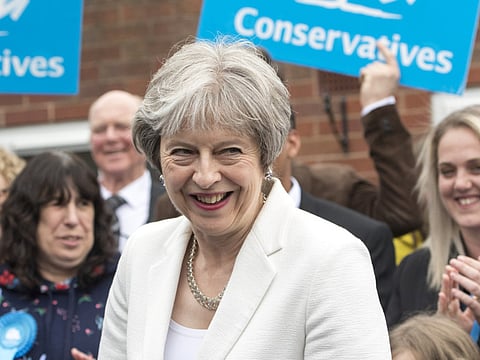The UK cannot have a hard Brexit
Prime Minister May’s government is safe but the internal British political argument is hotting up over customs arrangements with the EU

With the wonderful benefit of hindsight, the great moments of political choice can take on a deceptive inevitability. Yet in real time, these moments that make or break governments — such as Sir Robert Peel’s repeal of the corn laws, which split the Tories for a generation — are more typically the hard-fought climax of processes that follow a circuitous and up-and-down path, with the key decision put off until it is inescapable.
The moment of decision for UK Prime Minister Theresa May over Brexit is following this pattern too. The route has meandered for nearly two years through negotiations, summits, lawmaking and elections; last week’s English elections will be part of the context too. The climax has been long predicted and frequently postponed. To judge by what Downing Street said this week, as ministers prepared for Wednesday’s cabinet committee on customs arrangements with the EU, it may well be pushed back yet again by a few weeks. Yet the moment is nearing all the same. When it finally arrives it will be bitter and destructive, above all for the Conservative party. But the Brexit terms were always going to have to be faced in some form. That form, it now turns out, will focus on the customs arrangements.
Much of the commentary presumes that the outcome remains in serious doubt. Yet it seems increasingly likely that the UK will seek to remain in some form of customs association with the EU. Whether the EU will agree is, however, another matter.
May has already grappled with this question twice during the Brexit negotiations. Both times it has come up in the unavoidable context of the Irish border. Both times, in December on the divorce terms with the EU and in March when a transition agreement was made, May signed up to a soft border in Ireland.
It is certainly true that the terms of the earlier deals contained significant elements of fudge. It is also true that the UK side still talks about technological solutions that the EU dismisses as fantasy. Nevertheless, unless May now abandons those two earlier agreements and unless the EU takes a much gentler line than it has done, there are only two realistic outcomes for Britain to choose from while avoiding the return of a hard border in Ireland.
These outcomes are, first, the UK remaining in some form of continuing customs union with the EU or, second, Northern Ireland remaining in the customs union while Britain leaves it. The latter is opposed by Northern Ireland unionists and May dismissed it as recently as Wednesday when she said at prime minister’s questions that an Irish Sea customs border was something no UK prime minister would agree to. This leaves UK membership of the customs union — or something on similar lines — as still much the most likely outcome of the internal British political argument. Why? Because the EU has shown no interest in, and is under little internal pressure to explore, either of the alternative options being debated by British ministers, and the arithmetic in parliament is tending that way too. In the House of Lords, Tory peers have voted with the opposition parties to demand a continuing customs union. Surely there will be divisions. Some Tories will reject any soft Brexit, although no cabinet Brexiteer has said it is a resignation matter. But the issue need not bring May’s government down. Jacob Rees-Mogg’s Euro-sceptic sabre-rattling over the customs issue this week is a bluff she will have to call. In the end and with no small irony, the pivotal issue in Brexit is the same one that in different ways has so haunted British politics for more than two centuries — justice for Ireland. Today, peace and prosperity in Ireland depend upon a soft Brexit for which there is a parliamentary majority. A hard Brexit, with a hard Irish border, is clueless, delinquent and playing with fire.
— Guardian News & Media Ltd
Martin Kettle is a Guardian columnist.
Sign up for the Daily Briefing
Get the latest news and updates straight to your inbox



